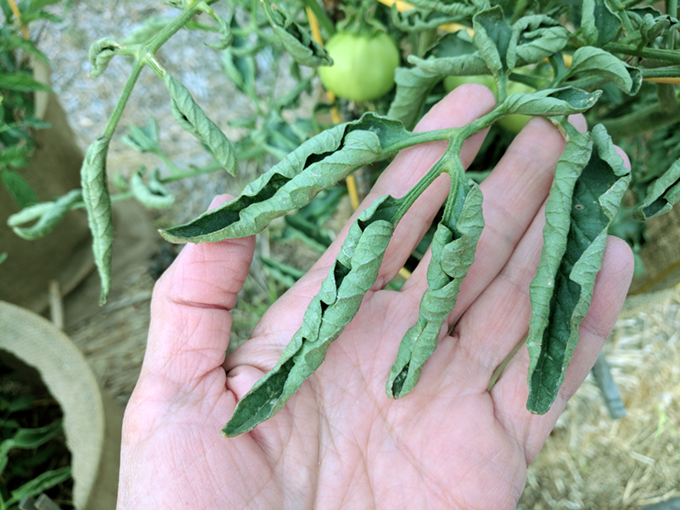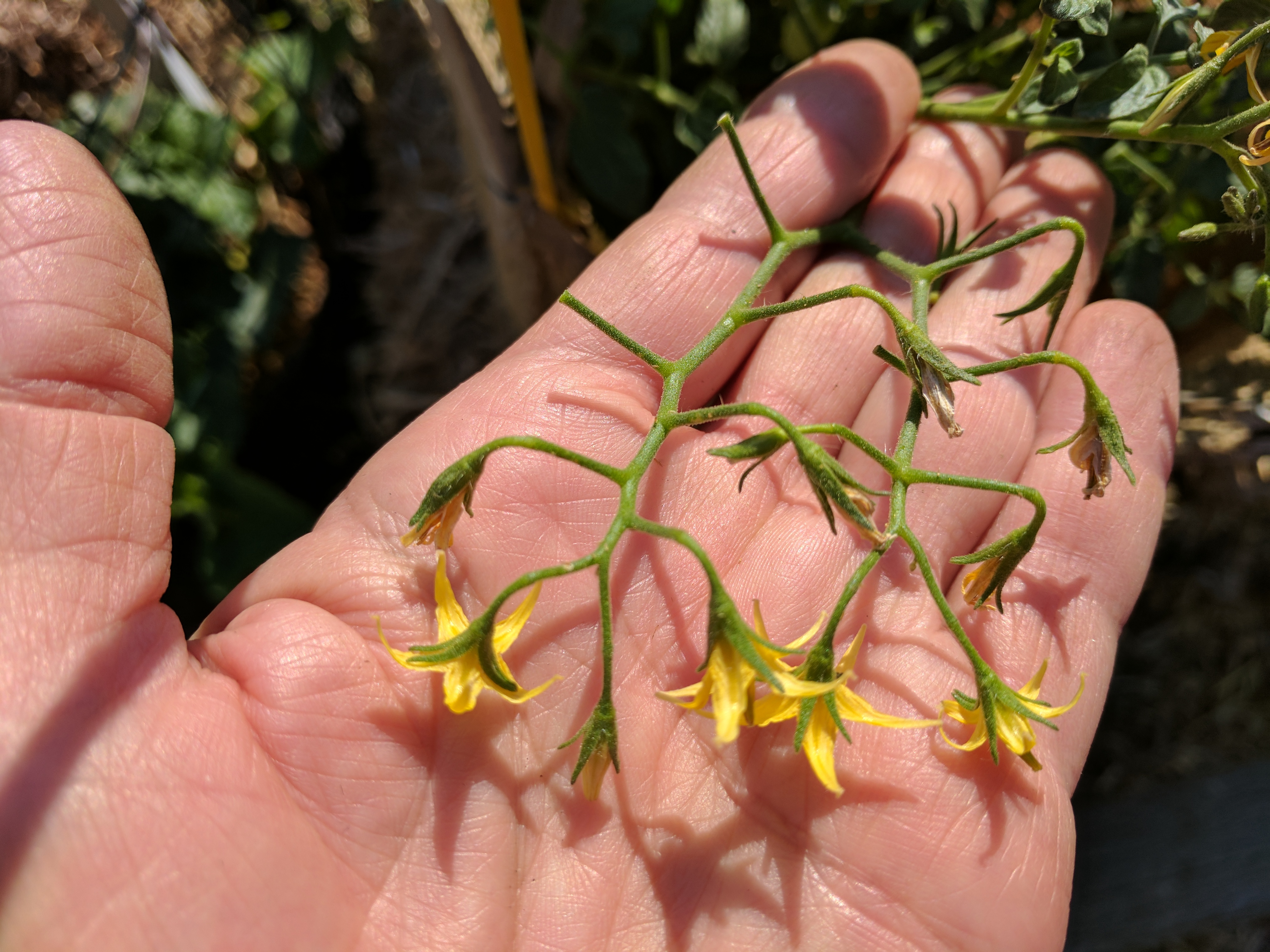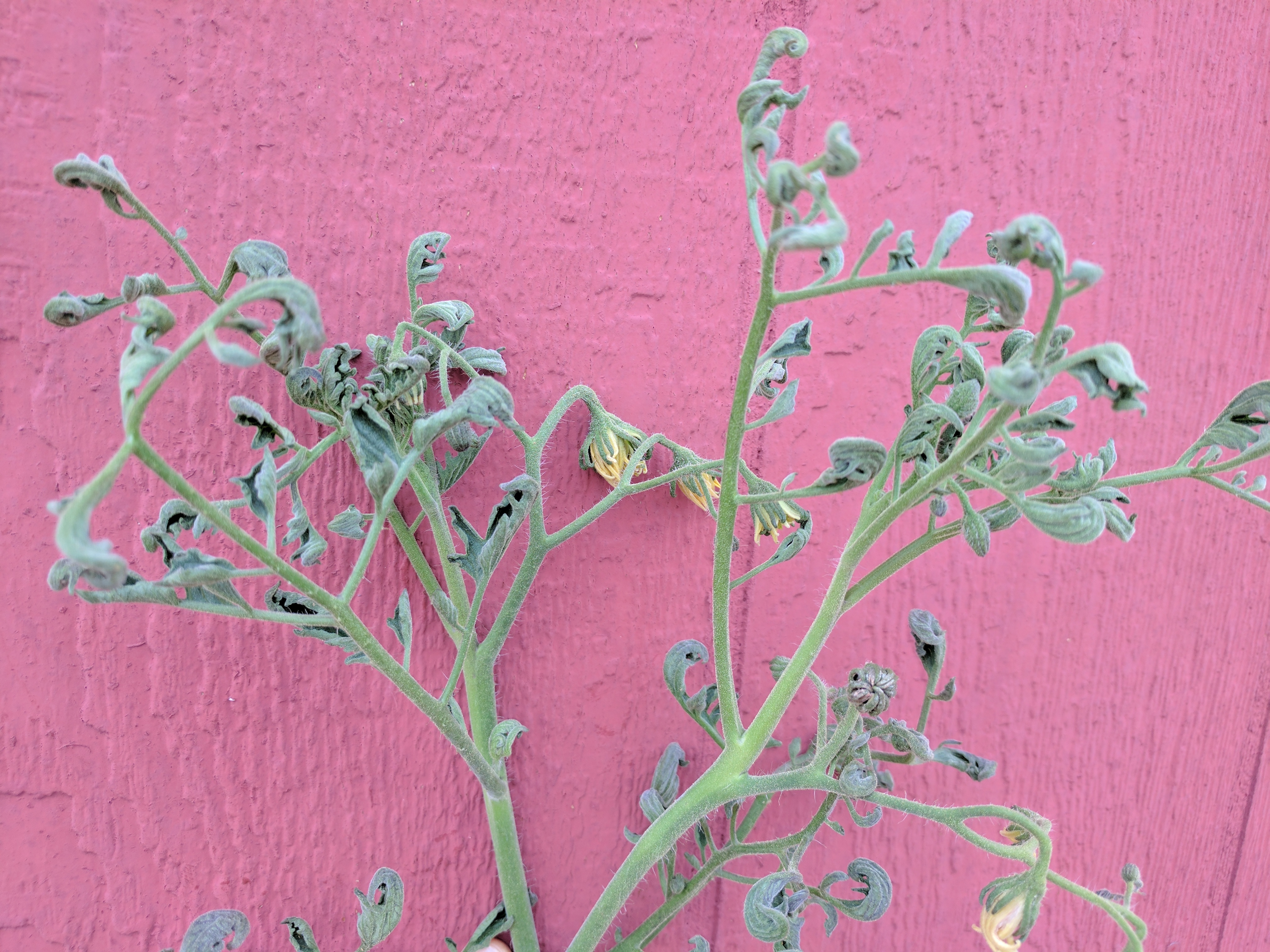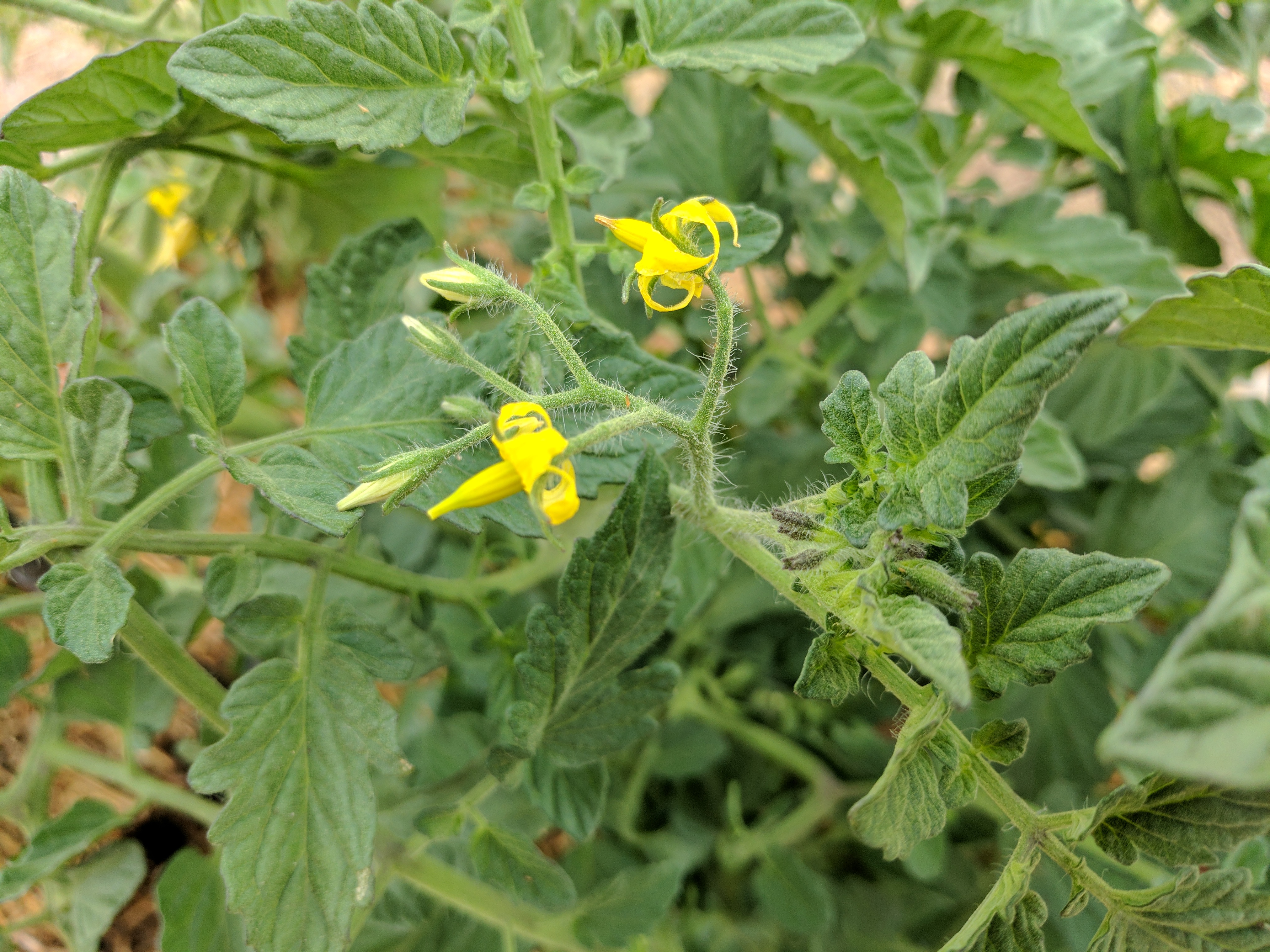Here at Tagawa Gardens, our plant advisers at Dick’s Corner are getting lots of questions about tomato problems. One of the most common issues is shown above, a condition that causes the tomato leaves to roll inward. This leaf roll isn’t a disease or the result of insect damage. It’s a classic symptom of heat stress.
Hot! Hot! Hot
This past June was the third hottest in Colorado history, with 27 out of 30 days reaching 90 degrees or hotter. Tomatoes are heat-loving plants, but even with plenty of water, the hot weather of the past several weeks is just too much of a good thing.
This condition is called “physiological leaf roll.” It’s a sign that the plant (one of mine, by the way) is going into survival mode. The oldest leaves cup, and if the stress continues, they roll inward. The plant is trying to minimize moisture loss by reducing the amount of leaf surface exposed to the hot sun. The leaves may also become thick and leathery.
Sometimes the leaves will relax and open up as the weather cools down… if the weather cools down. The leaves on my plant are still curled. But the good news is that the rolled foliage doesn’t seem to significantly slow down the development of the fruit that had already set.
Tomato pollen is sensitive stuff!
The tomatoes we grow in our backyard gardens are self-pollinating. A bit of wind now and then (or an occasional “thump” on the stem from an attentive gardener) moves the pollen within the blossom and the job of pollination is done.
But temperatures above 90 degrees can seriously damage the pollen. Because the flowers can’t get pollinated, they dry up and simply fall off, leaving nothing but the tiny stems that once held them in place. Fortunately, if the plant is healthy otherwise, more blossoms will develop once the weather cools down.
Time for some shade?
It is possible to help tomato plants during a heat wave by creating a little shade. Tagawa Gardens sells shade cloth that can protect tomato plants from the hottest part of the day. You’ll need to create a support to hold the shade cloth off of the plant, but the extra effort may be worth it to you.
Gardens can also be situated in such a way that taller plants offer some protection from the strongest early- to mid-afternoon sun. A bit of shade from taller plants or cloth can help reduce the damaging temperatures enough to prevent both leaf curl and blossom drop.
One more high-heat threat
Not all of the problems we’re seeing on our tomatoes can be blamed on Mother Nature. Some of them are our fault! This next issue is a prime example.
This is what herbicide damage looks like. And our garden advisers at Dick’s Corner are seeing a lot of it, including on tomatoes.
All herbicide packaging comes with detailed instructions for very good reasons. The “rules” go beyond mixing the chemicals in the right proportions, which is critically important. The labels also caution against using herbicides when the weather is especially hot or windy, and certainly when it is both.
When the air is warmer than the guidelines listed on the package recommend, what comes out of your sprayer as a liquid can quickly and easily become a toxic vapor. You won’t see it, but this cloud can drift onto nearby plants and cause extensive and irreversible damage. The “drift” may or may not kill those desirable plants, but it will permanently distort the foliage that it hits.
At times, our advisers at Dick’s Corner have also seen damage to tomatoes after a gardener mulched her plants with lawn clippings from grass that had been treated much earlier in the season with a weed-and-feed type fertilizer. The toxic ingredients in many herbicides can be very persistent, and caution is needed when you use them. Tomatoes are especially sensitive to these chemicals.
Are you seeing B.E.R in your garden?
Another common tomato problem this time of year is a condition called “blossom end rot.” It’s about as unattractive as it sounds.
Blossom end rot shows up as a flat or sunken brownish-black blotch on the bottom or “blossom end” of tomatoes, opposite the stem. It’s caused by a chemical imbalance that distorts the tissue on the fruit. It’s a result of improper watering, usually because the plants were allowed to go too dry between waterings. Deep, consistent watering will help prevent the problem. Tomatoes hit with B.E.R. may still be edible if the damage hasn’t penetrated too deeply into the fruit.
Some tomato T.L.C. tips
Tomatoes can be demanding, but they’re still by far the most popular vegetable grown by American gardeners. A little T.L.C. can help prevent a lot of the challenges that stand between us and our favorite veggie.
In addition to the topics outlined above, here are some basic guidelines to get the best tomato crop possible.
- Water your plants thoroughly, applying enough water to penetrate down to the deepest roots. Let the top couple of inches of soil dry out, then water deeply once again. Try to avoid overhead watering by irrigating instead at the base of the plant.
- Mulch your plants to preserve moisture and keep roots cooler.
- Remove the lowest branches so all of the plant’s leaves are at least six to eight inches above the soil. This will help reduce soil-borne diseases that can spread to the plant when water splashes back onto the leaves.
- Fertilize appropriately… not too much and not too little. A vigorous plant can stand up to stress much better than a weak one.
We all start the season envisioning robust, healthy tomato plants. But if you have problems, I encourage you to bring a fresh, bagged sample of your plant to our garden advisers at Dick’s Corner. Cell phone pictures of your plants are a big help, too.
And check out another of my blogs that deals with tomato issues that might come up a bit later in the gardening season. Click Here to view “Help, My Tomatoes Aren’t Cooperating!”
Even when they require a fair bit of pampering, I’m a dedicated and determined tomato grower! The harvest can’t come soon enough for me!








